Making your ATV wider can have some benefits like improved handling and a more stable ride through corners. It’s no wonder this is a popular enhancement for professional and recreational riders. But there are a couple different routes you can take to widening your quad.
To make your ATV wider, you can either get some wheel spacers, flip the wheels around, or you can upgrade your axles and A-Arms with wider aftermarket parts. All options will give you a wider stance, but each come with their own pros and cons.
A very common approach is to put wheel spacers on just the front, or all the way around front and rear. Some people prefer longer A-Arms in the front and wheel spacers in the back, or leave the back as-is. And lastly, the most solid way to widen your quad, is to put longer A-Arms in the front and a longer axle in the rear.
There are easy ways to widen your ATVs stance, and spend less than 100 bucks doing so, which I’ll talk more about later. But first, you should know the pros and cons of widening your ATV, then you’ll have a better idea of which route you want to take.
There are some great advantages to widening your quad from handling improvements to safer riding. But the main reason many riders widen their ATV is for the stability improvements when cornering.
A wider quad will be able to take corners at higher speeds without the risk of tipping or lifting up one side on you. This is also a safety improvement, less chance of tipping means for a safer ride.
But what about the downside? Well for one, some of the widening methods put extra strain on your parts and require maintenance or repairs more often. For example, the wheel spacers method.
Adding a set of wheel spacers to your ATV is a quick and easy way to widen the quad. But it puts extra pressure on wheel on the outside edge of the spindle. This causes what some people refer to as bump steer. Hitting any little bump will pull your steering in ways you weren’t expecting.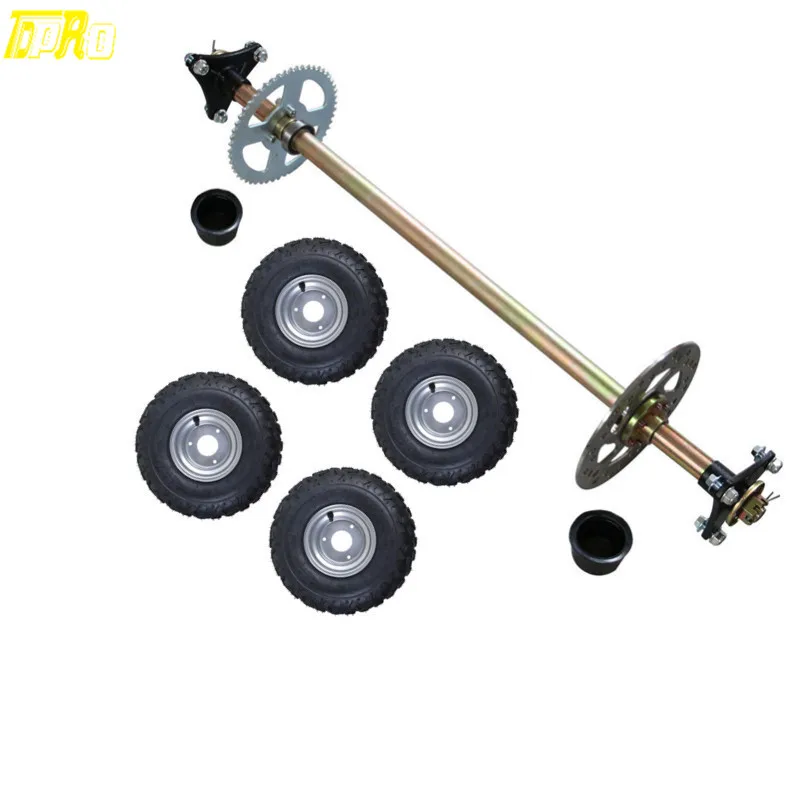
Another problem is the added strain to your suspension system when using wheel spacers. You are basically extending the wheels out but keeping the suspension system in place, causing it to take on more of a load than it was originally designed for.
I don’t think any of these are reasons to stop you from getting wheel spacers if you’re just looking for a cheap and quick way to widen your quad. But if you ride pretty rough and want a more reliable option, go with aftermarket parts like widening A-Arms and axles.
Another thing to consider, is where you ride. Some trails have width restrictions on ATVs. Mostly trails with bridges or gates will have these restrictions, but you can get a fine if you’re riding a quad wider than the width restriction on a trail.
The front of the ATV should always be a little wider than the rear. This of course is personal preference and not all ATVs come stock with a wider front.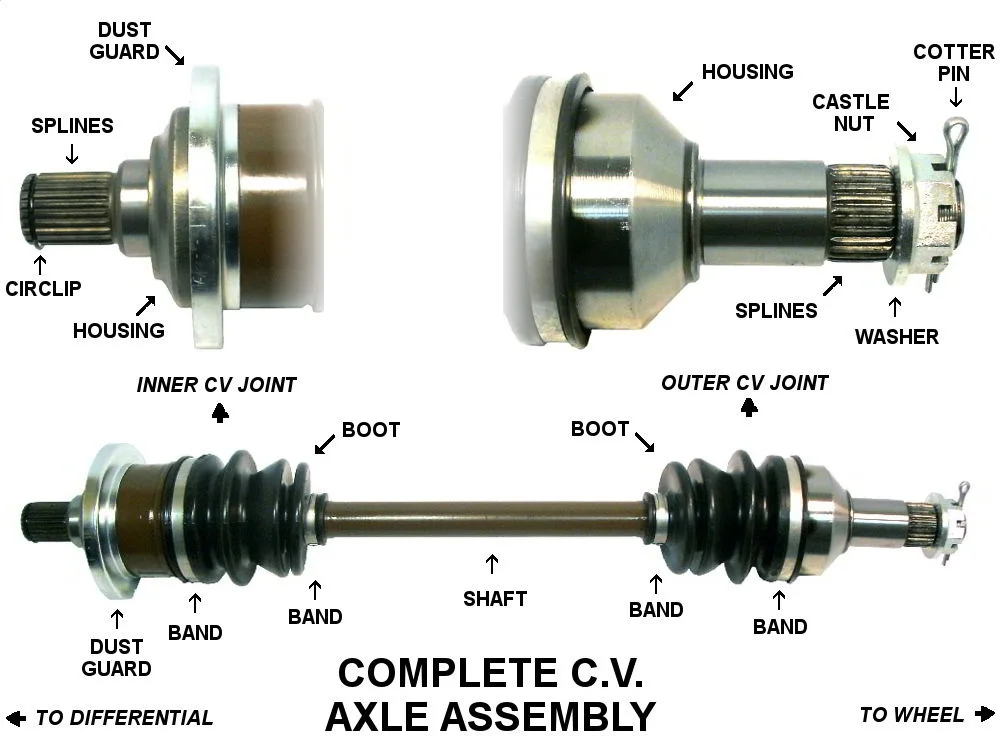 The front and rear should be pretty close in width either way. But if I had to choose, I would suggest a slightly wider front end.
The front and rear should be pretty close in width either way. But if I had to choose, I would suggest a slightly wider front end.
In fact, a lot of people only widen the front of the quad and they leave the rear as it is, stock. If you only widen the rear, or make the rear wider than the front, the ATV will tip more easily and the handling won’t be ideal.
The reason is that when you’re riding, you’re not paying all that much attention to the rear of the quad. Your eyes are facing forward, in the direction you’re heading. If your rear end is wider than the front. You’ll have to worry about the back end hitting things you wouldn’t expect.
Lets say you make a close pass to a tree, another rider, or any obstacle. You think you’re in the clear because your front tires squeeze by. But if the rear of the quad is wider, your back tires might hit the obstacle and cause you injury, or worse, broken parts.
This may seem hacky, but is actually a pretty common mod.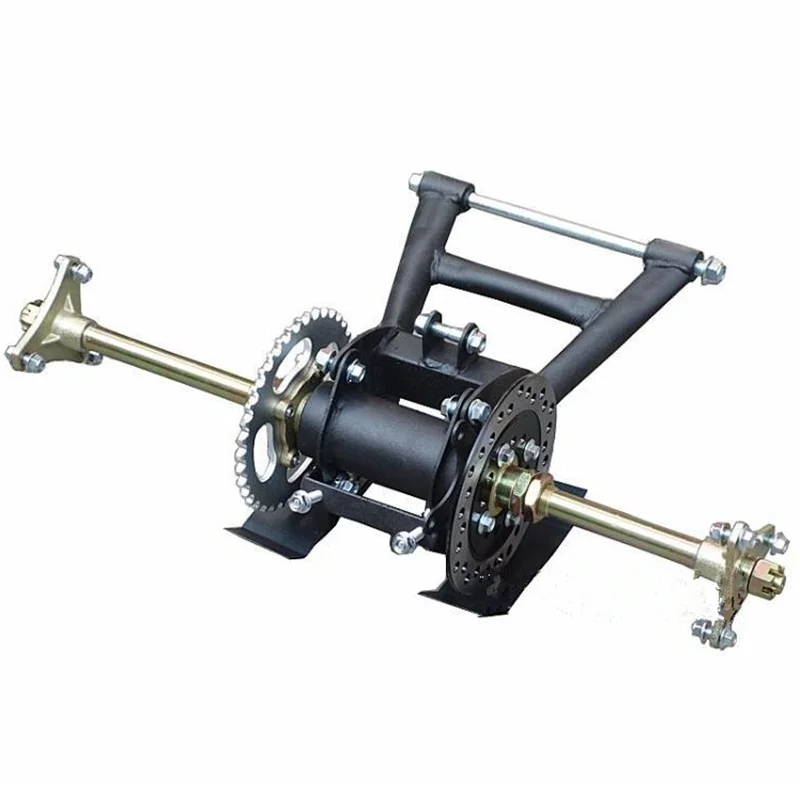 What you do is flip the wheel around on the hub to give you a few extra inches of width. It’s completely do-able, people do it all the time and it works.
What you do is flip the wheel around on the hub to give you a few extra inches of width. It’s completely do-able, people do it all the time and it works.
Most wheels will have a deeper inside of the rim than the outside. The wheel will bolt back on to the hub the same way with the same lug nuts. It will just be flipped so the shallow side of the rim is facing in towards the ATV.
I don’t really like this method because of where the tires stem is after you flip them. You could always drill a new hole in the rim and put a new tire stem in. But even then, on the front, you could wind up having valve stem clearance problems with the front brakes. I just avoid this method myself, but it can be a quick and cheap way to widen your quad a little bit without having to spend any money.
If you do go this route, keep in mind your tire tread. Some tires have the tread shaped to move in a certain direction. If that’s the case for you, you can try swapping the sides of the quad your tires are on when you flip them.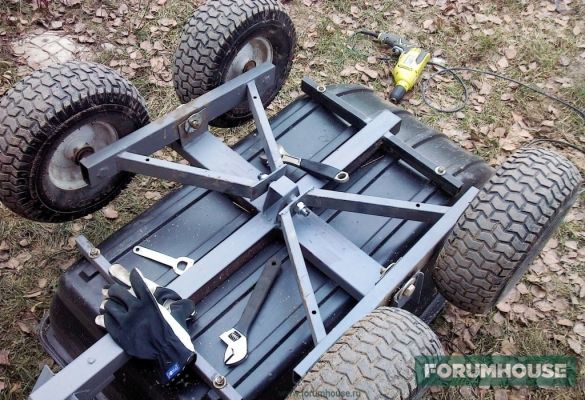 That way the tread is still facing the right direction.
That way the tread is still facing the right direction.
This is another popular option to take because of how easy and cheap it is to do. For the most part people will add these onto the rear when they widen the front with longer A-Arms, but some people even put these on all four wheels of their machine.
It’s a pretty quick and easy install too. You simply take your wheel off, mount the wheel spacers on the hub where the wheel was, and then mount the wheel onto the wheel spacers. Simple as that, and you’re good to go. Most wheel spacer kits will come with instructions to do the install, and most of the time it’s a pretty straight forward process.
If you ride your quad pretty hard or take turns and jumps at higher speeds, I do not recommend using wheel spacers. You’re better off with longer A-Arms in the front and a longer axle in the back. A lot of people have had good luck with wheel spacers, but I’ve heard the horror stories of a wheel spacer cracking, breaking off, and causing a crash.
If you do mostly light trail riding or don’t like beating on your machine, you’ll probably be fine though. Wheel spacers can be found for around 50 bucks online now a days for a really decent quality set. Check out this set of Freedom Country ATV Wheel Spacers on Amazon to start your search.
This is my preferred method for widening your ATV in the front end. Nothing beats solid parts that you can rely on that you’ve installed on your machine yourself. I usually go for a +2 inch extension on the A-Arms, but it’s really up to you how wide you want your quad.
You can find extended A-Arms for almost any ATV online for between 300 and 450 bucks. Try this ATV Extended A-Arms Search in Amazon. I have had good luck with the Team Alba Racing A-Arms before. Just make sure you get the right ones for your year, make, and model.
To swap the A-Arms out check out my Step By Step Guide To Removing And Installing A-Arms On An ATV article for a guide on how to do the swap. Most good sets of extended A-Arms will come with instruction, and may have special steps for any special spacers or washers included in the kit.
Most good sets of extended A-Arms will come with instruction, and may have special steps for any special spacers or washers included in the kit.
This is my preferred method for widening the back end of an ATV. It’s a lot harder to do, and will cost a little more than just throwing on some wheel spacers. But when you’re done, you’ll have a solid machine that you don’t have to be careful riding.
You can find extended axles for most ATVs online for a couple hundred bucks a pop. Putting the total for both sides above 400 dollars in most cases. Check out this ATV Extended Axle Search in Amazon to give you an idea of what you’re looking at.
Some of the axles you buy will come with instructions, but a lot of them don’t. So I wrote this How To Change Out An ATV Axle article to give you the step by step procedure if you need it. It will probably take a few hours to change out the axles on both sides of the quad.
Sharing is caring!
An ATV width increase is one of the most popular machine upgrades, but do you really need it and which method is right for you?
Image from www.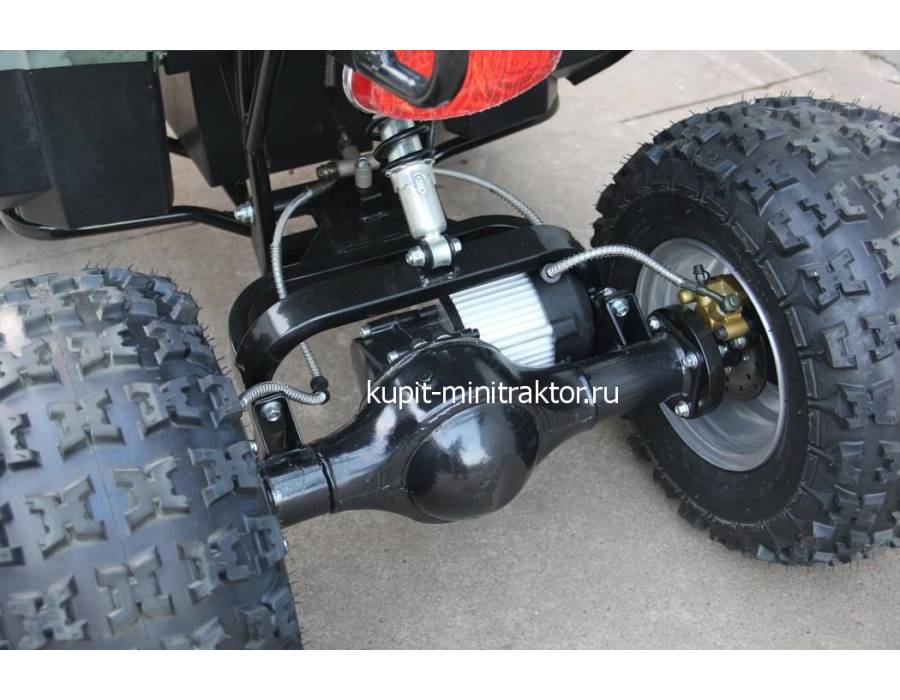 atvconnection.com
atvconnection.com
The maximum width you can legally make your ATV is 50 inches in most places. Some states are making motions to expand it to 55.
Widening an ATV positively impacts its performance by improving handling and making cornering more stable even when going at higher speeds.
There are two downsides to widening an ATV. First, it puts extra strain on the machine's parts, so you have to increase your diligence with routine checks and maintenance and may need to make repairs and replacements more often. Second, widening your ATV may limit where you can ride. Some trails and parks have width restrictions because there are places on the trail that aren't wide enough for the machine to safely or even possibly fit.
The individual methods of widening your ATV have their own drawbacks and will be discussed below.
ATV are the core piece of riding gear for off-road riders
Find out the best look for you
This is a fairly simple, no cost method of widening an ATV.
If you flip your wheels around, inside out, you can instantly increase the width of your ATV by a few inches. You may not have known that you can attach the wheel the same way when reversed.
Flipping the wheels increases the width because the wheels usually have a concave on the machine side of the wheel. When you turn the wheel around, the more shallow side of the rim is closer to the machine, placing more tire on the outside.
This method may not be possible for everyone. If your wheels don't have a concave on the inside, you won't notice any difference. Some tire treads are designed for movement in a certain direction and won't work or wear the same when flipped.
A downside is that if all you do is take the tire off and turn it around, the tire stem will be on the inside of the machine. If possible, you could move the tires to the opposite side of the ATV so the tire stem is still on the outside.
Image from www.boostatv.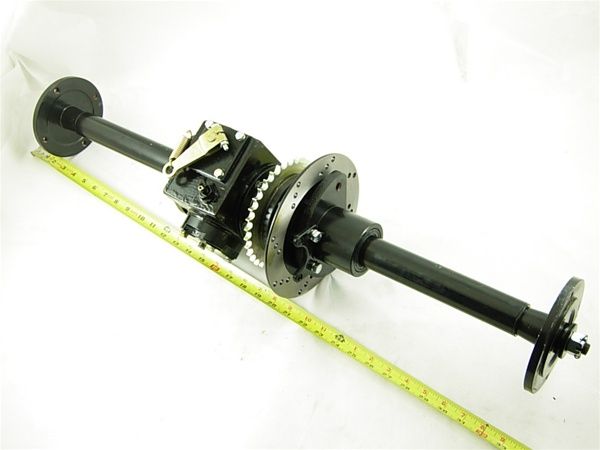 com
com
Wheel spacers are a pretty simple and inexpensive way to widen your ATV.
The first step is to select wheel spacers, making sure to remember that they should be half the width you want to widen your ATV because you'll be putting one on both sides. Then you remove the wheel, mount the wheel spacers on the wheel hub, and replace the wheel. Voila!
The downside to this method is that it doesn't suit rough riding well. If you're going to be punishing your ATV, you will punish the wheel spacers too, potentially causing breakage that could lead to a crash. The larger the wheel spacers, the less punishment they can take.
It's wise to get the smallest wheel spacers for your needs rather than being tempted to go bigger.
You can replace your machine's A-arms with longer aftermarket ones. This requires more investment, often around $400, but it is a tougher upgrade than wheel spacers and suitable for any kind of riding. This method is also the best choice when you want to add a greater amount of width. Rather than adding larger wheel spacers, jump right to the A-arms.
This method is also the best choice when you want to add a greater amount of width. Rather than adding larger wheel spacers, jump right to the A-arms.
The aftermarket A-arms will come with step-by-step instructions.
It is also possible to replace the axles with aftermarket ones for added length. This too often costs around $400 and requires more work, but it is tough enough to tackle any riding.
Many aftermarket axles will come with instructions, but if you purchase ones that don't, you can find detailed instructions online. This install is a little more difficult than installing new A-arms.
You don't have to choose just one of these methods. You can pair them depending on the width you want to achieve and whether you want the front wider than the back or for both to be equal.
If all you want to do is make the front a little wider than the back, you could add some small wheel spacers in the front.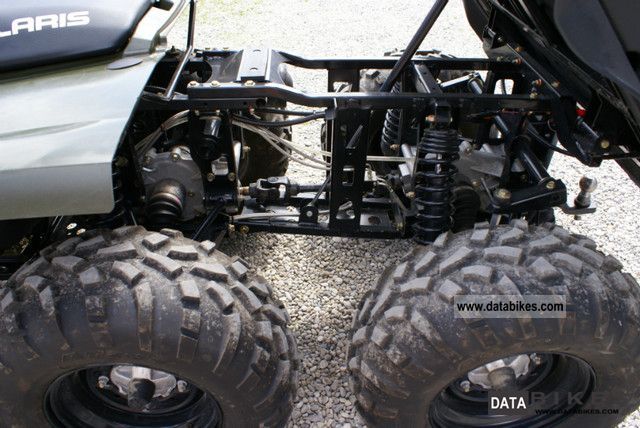 If you want more width and for the front to be wider than the back, you can add A-arms in the front and wheel spacers in the back. When widening your ATV with the toughest riding in mind, you could put new A-arms in the front and new axles on the back.
If you want more width and for the front to be wider than the back, you can add A-arms in the front and wheel spacers in the back. When widening your ATV with the toughest riding in mind, you could put new A-arms in the front and new axles on the back.
HIT
ENDURO LIGHT Graphite
the most durable
458 EUR
HIT
ENDURO Camogrey
the most durable
657 EUR
ENDURO Graphite
the most durable
279 EUR
HIT
ENDURO Graphite
the most durable
657 EUR
-28%
AQUAMASTER-ZIP LIGHT Camogrey
with central zipper
598 EUR
430.40 EUR
HIT
ENDURO LIGHT Camogrey
the most durable
458 EUR
-12%
AQUAMASTER LIGHT Red
reliability & comfort
438 EUR
386. 20 EUR
20 EUR
NEODRY Black
17 EUR
11.90 EUR
ENDURO Camogrey
the most durable
279 EUR
AQUAMASTER Blue
reliability & comfort
647 EUR
-20%
HIT
AQUAMASTER Red
reliability & comfort
259 EUR
207.20 EUR
-40%
HIT
AQUAMASTER Orange
reliability & comfort
259 EUR
155.40 EUR
AQUAMASTER Red
reliability & comfort
677 EUR
BELT
9 EUR
ENDURO BF Camogrey
bootfoot waders
528 EUR
ALL SEASON Black
59 EUR
ENDURO BF Camogrey
bootfoot waders
329 EUR
ENDURO Grey
29 EUR
26.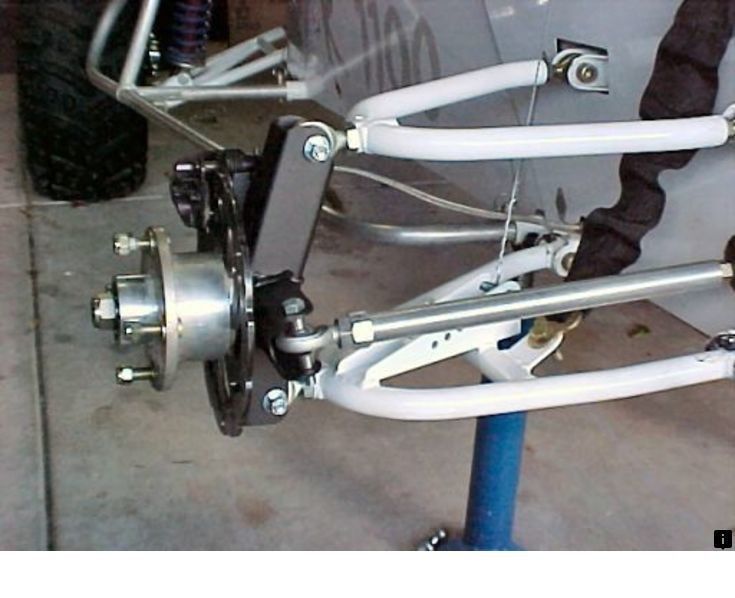 10 EUR
10 EUR
MUDWAY Graphite
179 EUR
MUDWAY Camogrey
179 EUR
Explore all
A quad bike, unlike a snowmobile, is an all-season use technique. But in order for the all-terrain vehicle to faithfully plow the virgin snow all winter, it must be prepared for operation in the cold season. Otherwise, by the end of winter, or even earlier, the quadric can easily “die”. The AvtoVzglyad portal tells about the nuances of the winter use of "quadrics".
Maxim Stroker
Most often, ATV owners face the problem of difficult starting in cold weather. Perhaps the problem may be in poor contact between the power wires and the battery terminals. If there is oxidation in the connection, then the battery itself does not charge well and at the time of starting in the cold it simply does not have enough voltage to confidently turn the crankshaft with the starter.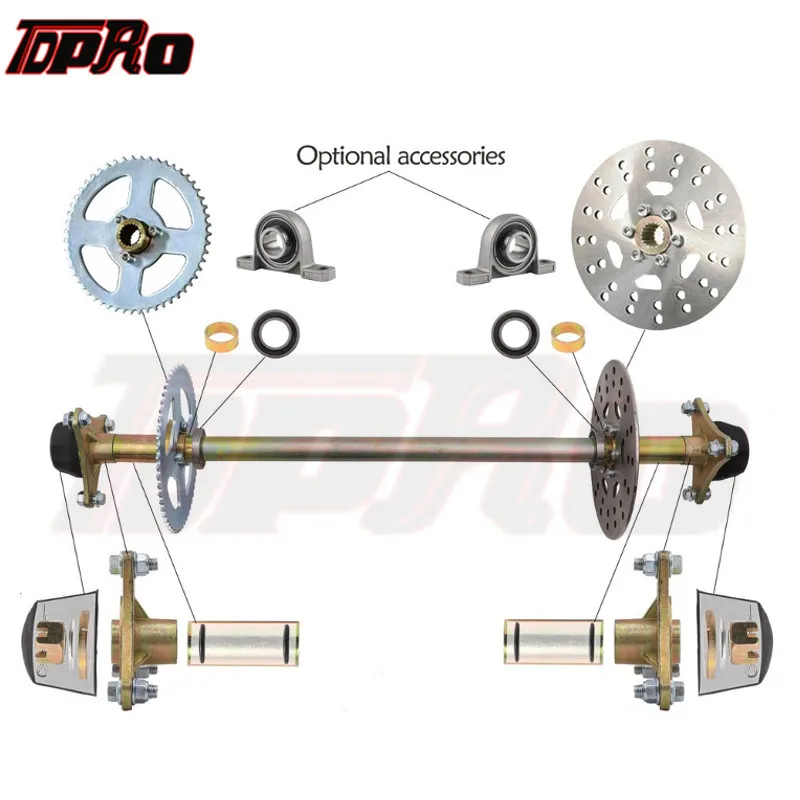
The problem is solved simply: disconnect the wires from the battery, remove oxides with sandpaper, and so that they do not form in the future, we process the battery terminals with a special Liqui Moly Kontaktreinig contact cleaner. This combined action aerosol formulation removes metal oxides and grease in a single process. The special chemical formula almost instantly loosens and eliminates oxide salts, restores electrical conductivity, and also blocks leakage currents.
But much more often the cause of difficult start-up in cold weather is engine oil. Most ATVs run on 10W-40 or 10W-50 lube during the summer. In general, such oil is considered to be quite all-weather, but if your “quad” is not in a heated garage, but on the street, then in severe frosts, difficulties arise with starting the engine, since the thickened oil provides excessive resistance.
But even if the engine starts, then the first seconds after starting it can work, which is called dry, since it will be very difficult for the oil pump to create the necessary pressure due to the thickened lubricant and supply it to the rubbing surfaces.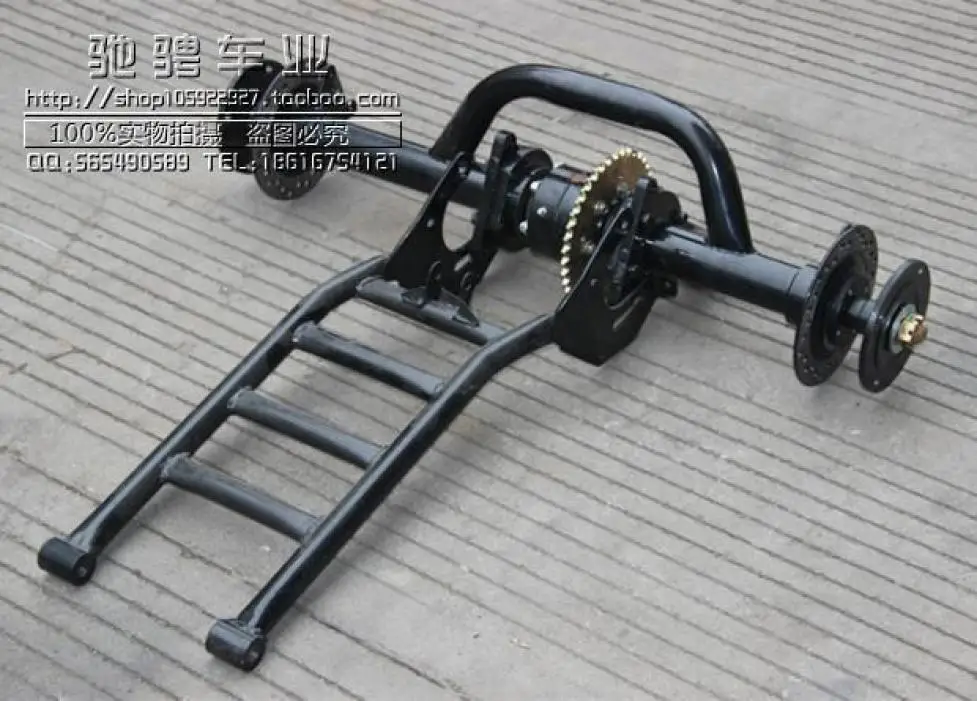 This is especially dangerous for motors assembled on so-called plain bearings, because due to oil starvation, main or connecting rod bearings can turn.
This is especially dangerous for motors assembled on so-called plain bearings, because due to oil starvation, main or connecting rod bearings can turn.
In order not to encounter such a problem, before the onset of severe cold, you should fill the ATV engine with oil with a viscosity of 5W-50. The Liqui Moly product line has a quality lubricant with the right characteristics, one hundred percent suitable for ATV operation in winter. Liqui Moly ATV 4T Motoroil 5W-50 HC-synthetic motor oil provides maximum performance and engine protection under all operating conditions.
Anti-wear additive package and base stock provide maximum ATV engine protection and trouble-free operation over a wide range of temperatures and loads. The oil guarantees easy start-up at low temperatures and high viscosity-temperature stability.
It is by no means a superfluous procedure before winter to change the oil in the all-terrain vehicle gearboxes.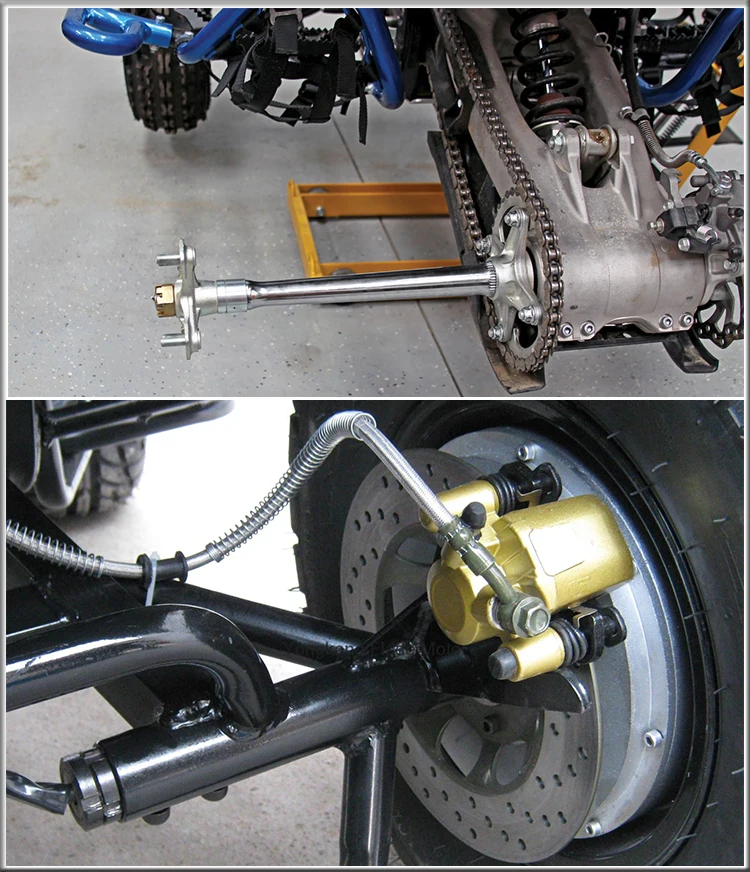 Despite the fact that there is no winter transmission for ATVs as such, it is still necessary to change the oil before frosts, because water from autumn puddles could well get into these nodes, through a breather or seals, which, mixed with oil, turns into an emulsion . And if you take into account that the gearboxes of modern ATVs have an electrician (someone has an electromagnetic clutch, someone has a servo drive), then there will be continuous problems from such a “slurry” in winter.
Despite the fact that there is no winter transmission for ATVs as such, it is still necessary to change the oil before frosts, because water from autumn puddles could well get into these nodes, through a breather or seals, which, mixed with oil, turns into an emulsion . And if you take into account that the gearboxes of modern ATVs have an electrician (someone has an electromagnetic clutch, someone has a servo drive), then there will be continuous problems from such a “slurry” in winter.
If there is any chance that the gearboxes of your "rogue" have taken a sip of water, then in addition to filling in new oil, they also need to be washed. Drain the waste from the gearboxes, tighten the bottom plug, and pour the quick cleaner Liqui Moly Schnell-Reiniger through the filler.
This agent is absolutely safe for electrics and rubber seals of the gearbox, but at the same time it will effectively clean the inside of the assembly from the remnants of the emulsion. For best results, jack up the quad axle you are flushing and turn the wheels forward/back by hand to flush the remaining emulsion from the sidewalls as well.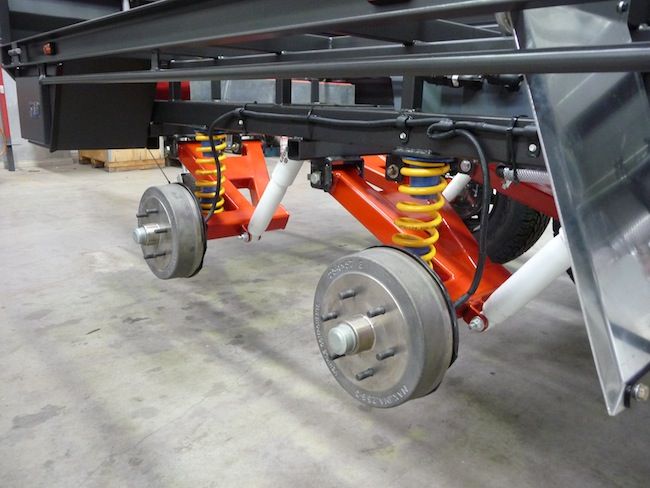 After that, unscrew the drain plug, get rid of the dirty contents and, screwing the plug back, pour in fresh gear oil.
After that, unscrew the drain plug, get rid of the dirty contents and, screwing the plug back, pour in fresh gear oil.
ATVs most often use a transmission with a viscosity of 75W90. It is suitable for most ATVs and is poured into both front and rear gearboxes. The German brand Liqui Moly has in its assortment a synthetic gear oil for motorbike Gear Oil 75W-90. It is in a sense universal, all-weather, and equally suitable for transmissions and motorcycles, and scooters, and ATVs, and snowmobiles.
This oil contains polyalphaolefins and special additives, due to which the lubricant does not change its properties either at sub-zero or positive temperatures. Its thermo-oxidative stability and resistance to aging allow for extended drain intervals that are significantly higher than other similar oils of similar viscosity.
In any case, check the manufacturer's recommendations before filling gears with oil, as some ATV models require gear oil for clutch operation. By the way, Liqui Moly also has such oils in its product line.
For the running gear to work well, it also needs to be prepared for the winter. Namely, lubricate the bushings of the fists and suspension arms with grease with a low freezing point, which at the same time is capable of operating in combined metal-plastic pairs. Perfectly fits this description of Liqui Moly Thermoflex Spezialfett.
This light beige grease has a long service life and is resistant to water and low temperatures (up to -50C).
… As we can see, in order to meet the Russian winter fully armed, an ATV does not need so much: the desire of the owner, skillful hands and high-quality technical fluids, such as German Liqui Moly fluids.
We solve "unsolvable" problems with the repair of equipment in one "puff"
23110
We solve “Unresolved” problems with equipment repair in one “Pshik”
23110 9000 , car service, repair, maintenance, motorcycle equipment, auto chemical goods, life hack
and also provides a soft passage of problem areas of the relief.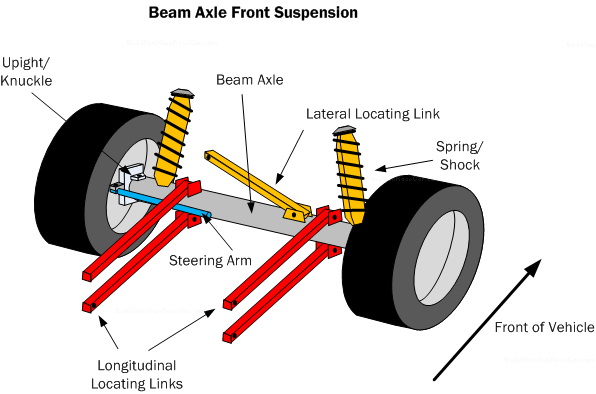 The sale of ATVs implies a special attitude to this unit and detailed advice on the procedure for its adjustment and maintenance.
The sale of ATVs implies a special attitude to this unit and detailed advice on the procedure for its adjustment and maintenance.
A distinction is made between dependent and independent suspension. The second type is most often found among modern ATV models. Each motorist can adjust it in accordance with his own preferences, as well as operating conditions.
Among the advantages of ATV dependent suspension it is worth noting:
Such attractive performance of this suspension is due to the extreme simplicity of its design.
Regardless of the type of ATV suspension, there are some regularities in its structure. There are front and rear suspension types. In order for 125cc ATVs to boast a high level of ride comfort, the front suspension is usually made independent. Often it is supplemented with elements such as a pair of wishbones and telescopic shock absorbers. As for the rear suspension, it can be dependent, independent or semi-independent, and can also be equipped with pendulums and shock absorption devices.
As for the rear suspension, it can be dependent, independent or semi-independent, and can also be equipped with pendulums and shock absorption devices.
Suspension of any ATV is a set of spare parts, assemblies and assemblies located between the motor vehicle body and the track. It consists of the following components:
ATV suspension also performs many important functions, namely:

Based on this, the suspension, despite the relative simplicity of its device, plays a significant role in the design of any vehicle.
If your vehicle's suspension is not working properly or has failed, you may need to replace some of its components with new ones.
The following ATV suspension components most often fail:
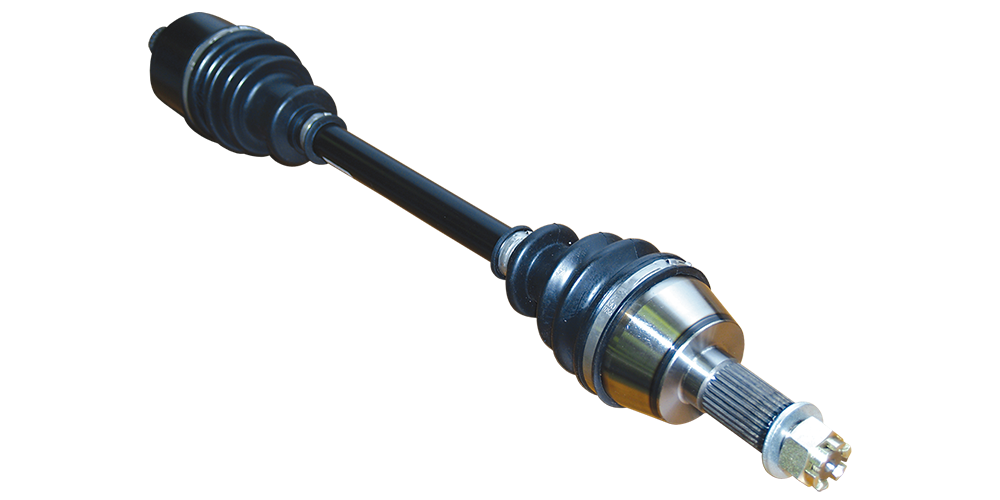
To repair the suspension of an ATV without outside help, it will be enough just to find the failed elements of motorcycle equipment and replace them.
By adjusting the ATV's suspension for yourself, the rider will be able to get maximum pleasure and comfort in the process of driving. It is especially important to correctly configure this aspect in sports models of motorcycles. The fact that it is time to adjust the ATV suspension is indicated primarily by uneven tire wear, as well as the presence of problems and discomfort when driving a motorbike.
Setting up the suspension of motor vehicles is carried out as follows:
